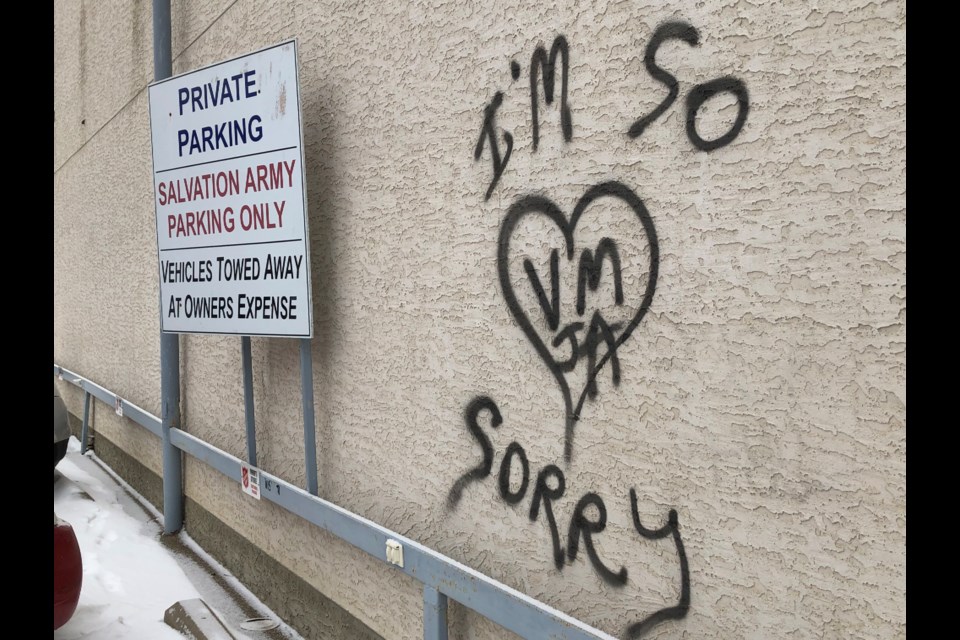The recent spate of graffiti on buildings throughout the downtown could be someone’s way of expressing his or her inner thoughts or attempting to communicate a message, police say.
“These people that are doing this tagging, they do it not to be anonymous; they do it to be infamous,” said Staff Sgt. Randy Jesse with the Moose Jaw Police Service (MJPS). “… I know for a fact in Moose Jaw, there is a little clique of individuals that do work and share amongst themselves like a little club.
“Whoever the artist was … , people know who that person is. He’ll be known in his little group. But we encourage the public to call us up (and) let us know who this person is, and we’ll go find him and see if we can get them to stop (and) hold them responsible for what they’ve done.”
One or more individuals tagged more than a dozen buildings and structures downtown, likely during the overnight hours of Jan. 21 to 22. The MJPS opened an investigation after receiving calls from a couple of affected businesses.
The police service is disappointed that people defaced public and private property, either with a gang-related tag or message expressing a certain point of view, Jesse said. Sometimes some people are “urban guerrillas” who tag trains with fancy text and pictures to express their talent.
“But it’s not always welcome to use public and private property as your canvas,” he continued, noting the police service receives one to two calls a year about graffiti even though it is mostly sporadic.
Property owners usually contact police immediately after being vandalized because they want to find out who did this and want to prevent it from happening again. They also report it to authorities for insurance purposes.
“We try to send out a positive message, and the message is, first, this isn’t a way to express yourself by putting graffiti on public and private property,” said Jesse. “The city and the police service have tried to make an outlet for people to put their art onto certain specified areas, as long as it follows a certain decorum.”
The police service has an initiative with both school divisions called Project 104. In areas where there has been graffiti vandalism, the parties work with youths to create a dedicated project. Jesse noted there are particular places throughout the community where graffiti-style paintings are allowed to beautify the area.
It’s important to clean up vandalism everywhere because if it’s left alone, it will attract further damage, Jesse said. This is the broken window theory: people are less likely to damage a building if they see that efforts are made to maintain it.
Another project the police service wants to undertake is to work with businesses that sell cans of spray paint. The idea would be for those businesses to ask for the name and address of people who buy these cans to ensure the products are used responsibly.
“For a lot of these kids, they’ll steal these spray cans. They shoplift it,” Jesse said. “So you can only do what you can do. We have a lot of surveillance (and) prosecution when we do it. But it’s a many-layered situation.”
Jesse declined to confirm whether one symbol painted on a couple of buildings was a gang symbol since he didn’t want to give that organization legitimacy. However, police can confirm if a symbol is gang-related by asking those group members about it.
Residents and business owners should call the police if their properties have been vandalized, either with graffiti or damaged somehow.
“We do take it seriously,” Jesse said.
Police photograph the graffiti to catalogue it and track its prevalence. Authorities can conduct a handwriting analysis to see if the same people spray painted the tags. Moreover, police could analyze the paint to see from where it came.
The Moose Jaw Police Service can be reached at 306-694-7600.
Crime Stoppers is seeking more information regarding this incident. Call 1-800-822-8477.




